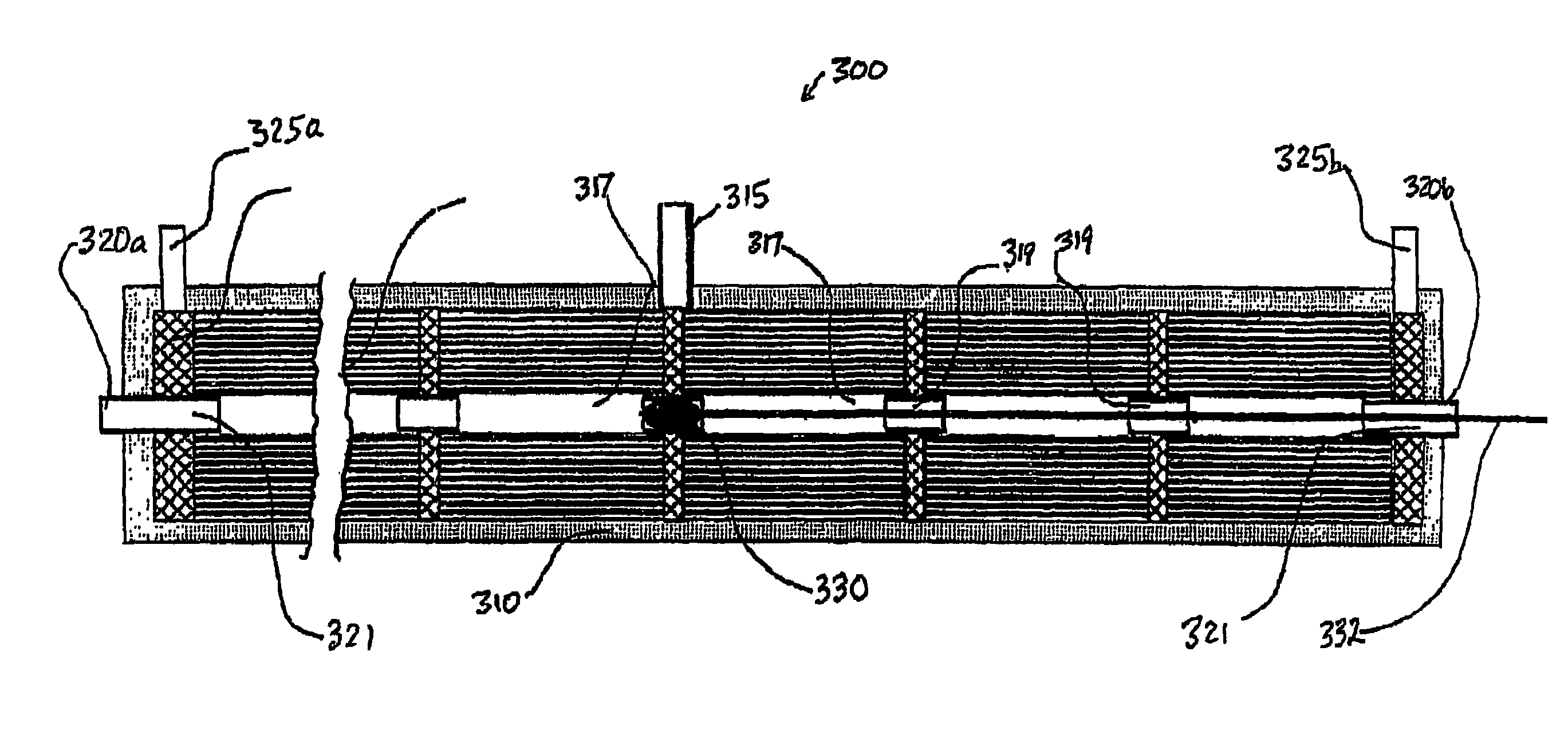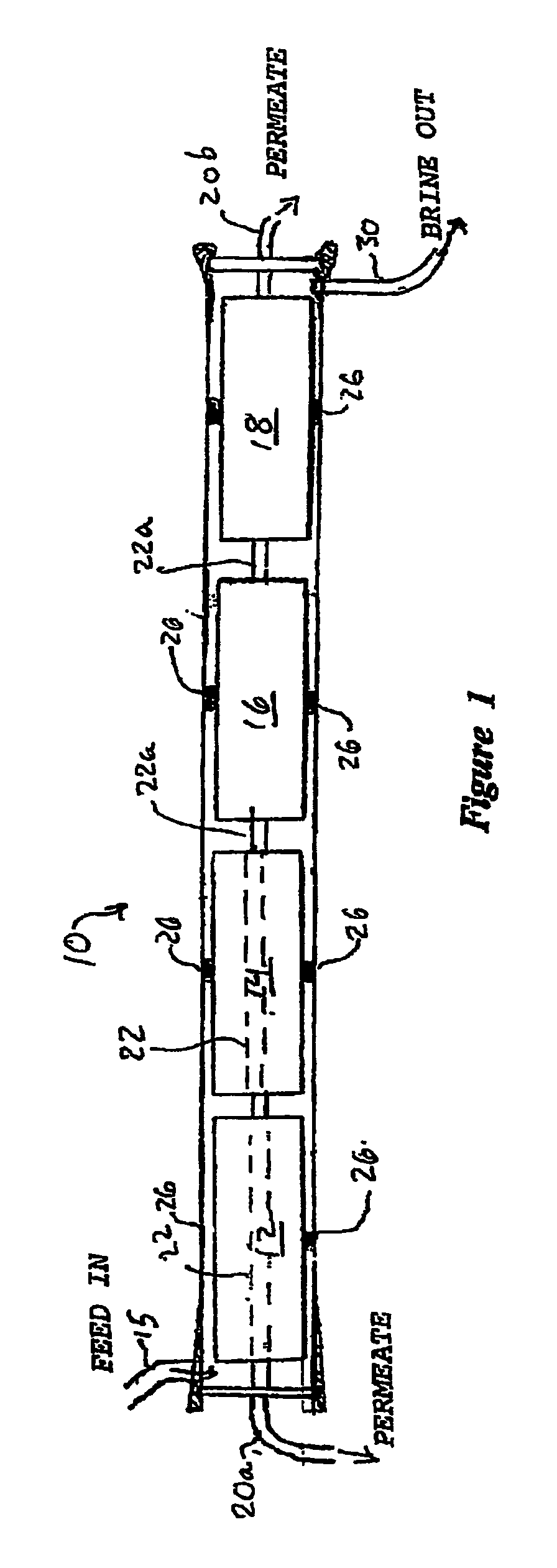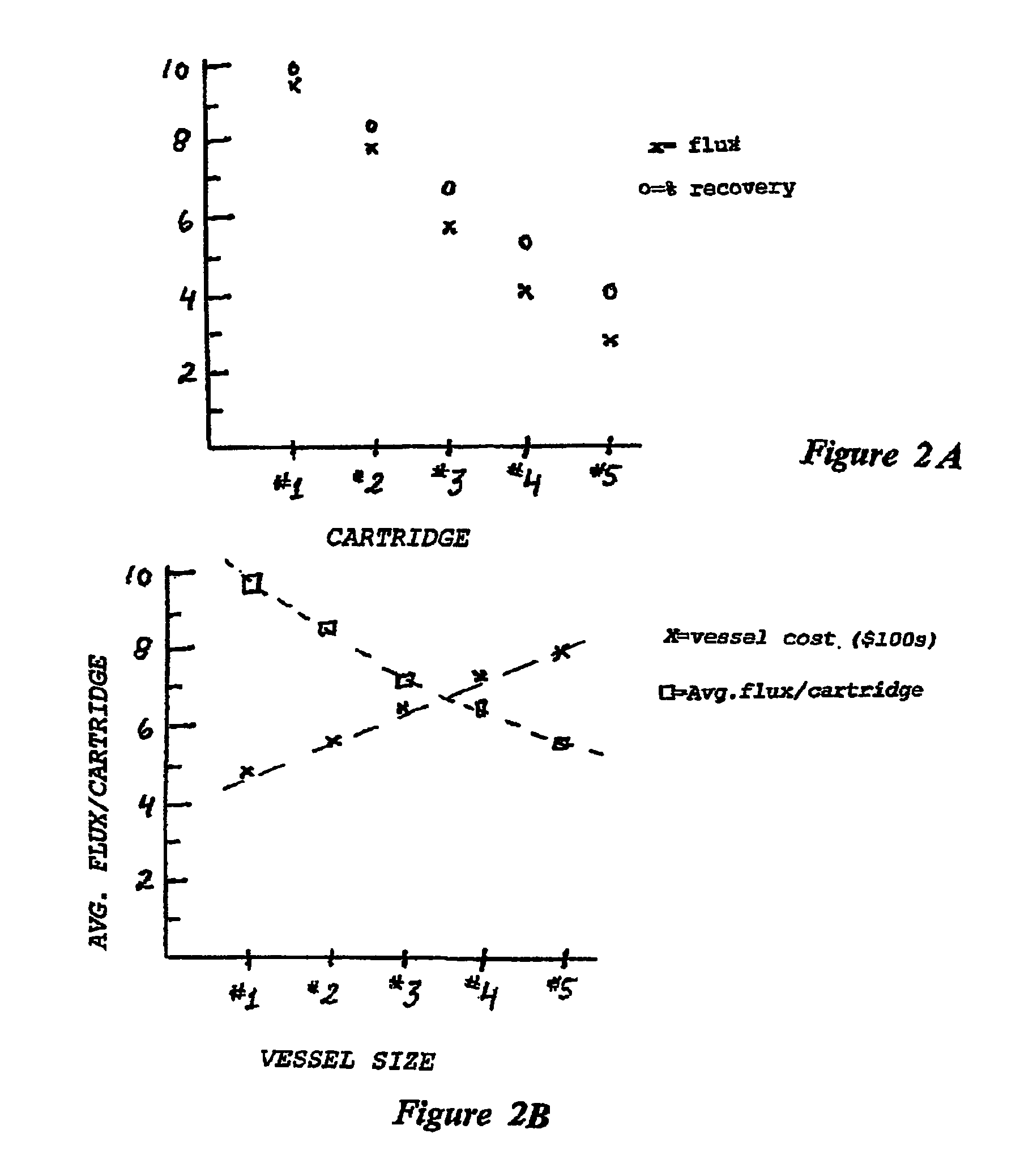Branched flow filtration and system
a filtration system and branch flow technology, applied in the direction of membranes, filtration separation, separation processes, etc., can solve the problems of reducing the overall number of required pipe connections, requiring extensive pretreatment equipment, and high pressure piping and valves required for feeding pressure vessels are relatively more expensive. , to achieve the effect of improving operation and/or performan
- Summary
- Abstract
- Description
- Claims
- Application Information
AI Technical Summary
Benefits of technology
Problems solved by technology
Method used
Image
Examples
Embodiment Construction
[0049]FIG. 1 illustrates the context of the invention, showing by way of example a typical conventional pressure vessel 10 of the prior art that holds a plurality of reverse osmosis or filtration membrane modules or cartridges 12, 14, 16, and 18. For clarity of illustration, only a few cartridges are shown, although as noted above, a vessel of this type may in practice be sized to hold six to eight or more RO membrane modules. The illustrated vessel 10 has an inlet 15 for feed fluid at its proximal end, outlets 20a, 20b for permeate that has passed through the filtration modules 12, 14, 16, and 18, and a reject or retentate outlet 30 at the distal end for the remaining (unfiltered) liquid residue from the feed stream. The feed is applied at one end to the interior space of the vessel, and the permeate is collected via conduit 22 located on the central axis of the vessel that serves as a collection manifold. The conduit 22 is typically comprised of conduit segments that are each asso...
PUM
| Property | Measurement | Unit |
|---|---|---|
| pressure | aaaaa | aaaaa |
| diameter | aaaaa | aaaaa |
| pressure | aaaaa | aaaaa |
Abstract
Description
Claims
Application Information
 Login to View More
Login to View More - R&D
- Intellectual Property
- Life Sciences
- Materials
- Tech Scout
- Unparalleled Data Quality
- Higher Quality Content
- 60% Fewer Hallucinations
Browse by: Latest US Patents, China's latest patents, Technical Efficacy Thesaurus, Application Domain, Technology Topic, Popular Technical Reports.
© 2025 PatSnap. All rights reserved.Legal|Privacy policy|Modern Slavery Act Transparency Statement|Sitemap|About US| Contact US: help@patsnap.com



